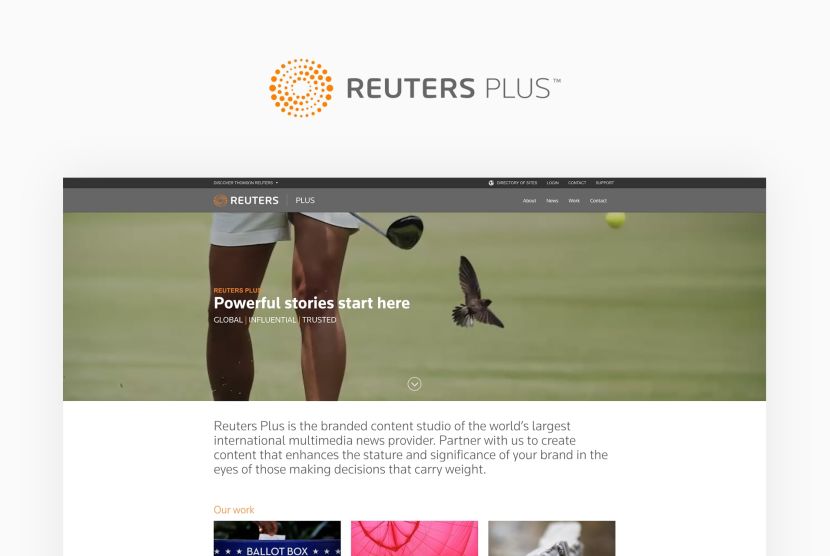
We have proven that consumers want sponsored content which does not conspicuously throw product or service in their face, but rather emphasizes the value that the brand wants to share with its customer. Content that is clearly marked as sponsored, but is so good that the customer wants to consume it. The potential of native advertising is so immense and it is surely not a buzzword that will blow over. It is estimated that the income from native advertising will reach 33 per cent of total advertising income globally in 2018.
Reuters has recently launched Reuters Plus, its own full service content studio. As the largest world agency, with over 2500 publishers around the world subscribed to its multimedia content, they have been offering the service of creating branded content for several years. In 2017, they have decided to take it one step further in their journey to serious market takeover. And they are not the only ones. Large and small publishers, marketing agencies – they all want to enter the exciting market of native publishing and other types of branded content. Native advertising has been an inevitable buzzword on the media and advertising scene and everyone wants to take over their part of the market. Media companies claim they are at an advantage because only they know how to produce high-quality content. Reuters boasts that with 167 years of experience as an agency they have the objectivity and credibility ingrained in their DNA.

With the omnipresent panic surrounding the fake news, they communicate that as an enormous advantage to the brands. T brand currently creates the best native advertising content with budgets that rarely go under 100.000 dollars, and they also use The New York Times’ credibility attributable to their ingenious journalism. Marketing agencies that have launched their native departments point out their independent position as an advantage on the market, unlike the editorials where journalists are not too keen on native advertising. Financial Times also publishes native advertising; however, aside from it being sponsored content, what makes it even more obvious is the marking that journalists and editorial had nothing to do with the creation of that content.

At 404, we have been in the native advertising business for two years. And yes, native is challenging, demanding and vastly exciting. We have published around 100 articles in all possible formats on different platforms for more than 30 clients. Native is not just an article. Depending on the topic, target and platform on which it is published, native can be a video, interactive infographic, attractive application, animation, even a whole microsite with all of the above. We collaborate with clients from different industries: energetics, telecommunications, largest hotel companies, food industry, automobile shops and the financial sector. There are at least 10 people engaged in every project. We have journalistic and editorial experience gained in the largest media companies in Croatia, top photographers, designers and other creative crew members who are in charge of high-quality production. A strong marketing team is in charge of creating a strategically deliberate campaign with clear and observable aims. Our performance team uses the available tools to track and analyze the success of campaigns in real time.

At the time when more than 150 million users are using ad blockers, and digital platforms are saturated with an abundance of questionable content, companies and brands are aware that the best way to the consumer’s heart is quality content.
Informative, attractive, fun and presented in a genius way. Content that doesn’t conspicuously throw the product or service in the consumer’s face, but rather emphasizes the value that the brand wants to share with its consumer. Content that is clearly marked as sponsored, but is so good that the customer wants to consume it. The potential of native advertising is immense and it is surely not a buzzword that will blow over. It is estimated that the income from native advertising will reach 33 per cent of total advertising income globally in 2018. Some even predict that it will exceed 70 per cent of total income by the year 2021. No one is asked whether they need native advertising or not anymore. Native has definitely become mainstream. Same as digital marketing which went mainstream in 2000s, and social networks ten years later. Now the question is how to further develop it? What is the best way to measure the efficiency of these companies? The right questions that force us to be even better. The best possible challenge.

